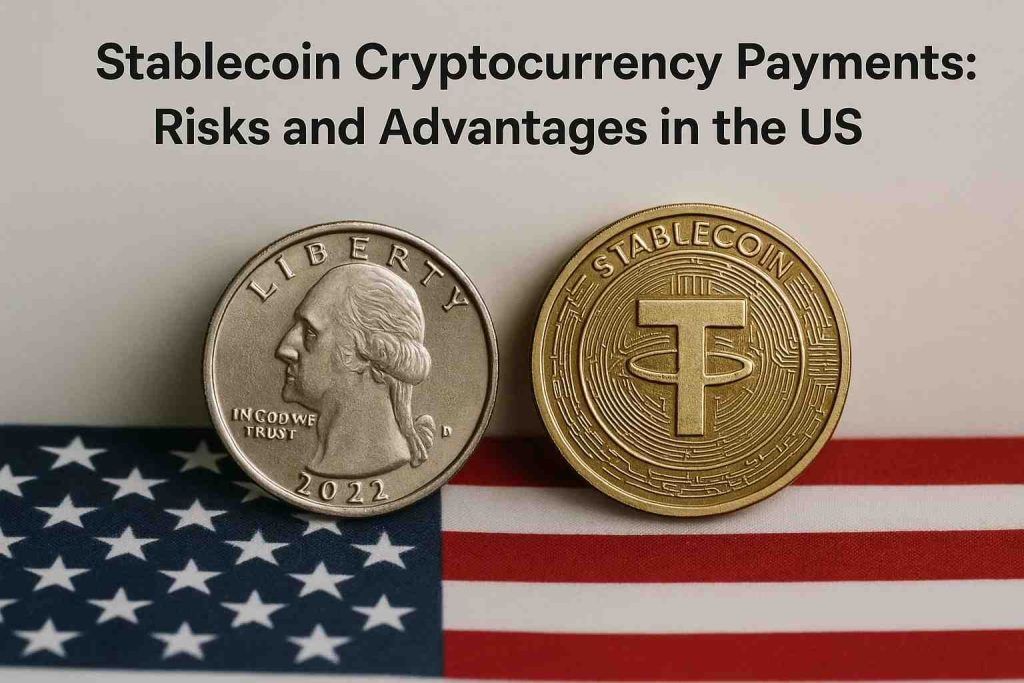The evolution of digital finance has accelerated rapidly in the United States, with cryptocurrencies playing a central role in this transformation. Among them, stablecoins have emerged as a unique category designed to bridge the gap between traditional money and digital assets.
Anúncios
They are cryptocurrencies pegged to stable assets, such as the US dollar, in order to reduce the notorious volatility commonly associated with digital currencies. As a result, stablecoin payments have attracted attention from both consumers and businesses seeking efficiency, speed, and new opportunities in the payment ecosystem.
Advantages of stablecoin payments

One of the most significant advantages of stablecoins is their ability to offer faster and cheaper payments. Unlike traditional banking systems that rely on intermediaries and can take days to process international transfers, stablecoin transactions are settled almost instantly.
Anúncios
Another advantage is accessibility. Stablecoins can empower people who do not have access to traditional banking services by enabling them to participate in the digital economy using only a smartphone. This aspect could help reduce financial inequality in certain communities within the US.
Risks associated with stablecoin use
Despite the benefits, stablecoin payments are not free from risks. A central concern lies in their stability and trustworthiness. While these coins are supposed to be backed by reserves of traditional currency or equivalent assets, questions often arise about whether issuers truly hold enough collateral to guarantee redemption.
Another critical risk is regulatory uncertainty. U.S. authorities, including the Federal Reserve and the Securities and Exchange Commission, are still debating how to classify and regulate stablecoins. The lack of clear regulatory frameworks exposes users and businesses to potential legal challenges. Furthermore, stablecoins could be misused for money laundering or illicit transactions if not properly monitored.
Regulatory landscape in the United States
Regulation is one of the most debated topics surrounding stablecoin adoption in the U.S. Policymakers recognize the potential of these digital assets to modernize payments but remain concerned about systemic risks. The main focus has been on ensuring that issuers maintain sufficient reserves, implement transparency measures, and adhere to anti-money laundering regulations.
The current environment is characterized by ongoing proposals and discussions. Some lawmakers have suggested treating stablecoin issuers similarly to banks, requiring them to hold insured deposits and follow strict compliance standards. Others argue that such regulation could stifle innovation and make it harder for smaller firms to enter the market.
The role of private companies
Private companies play a central role in shaping the stablecoin ecosystem. Entities such as Circle, the issuer of USD Coin (USDC), have been proactive in establishing transparency practices by publishing regular reports on their reserves. Their approach aims to build confidence among users, regulators, and institutional investors.
At the same time, technology companies and payment processors are exploring ways to integrate stablecoin payments into mainstream financial systems. For example, some fintech firms are testing the use of stablecoins for payroll, vendor settlements, and international transfers. The involvement of large corporations has the potential to accelerate adoption while also increasing the pressure on regulators to finalize comprehensive policies.
Future prospects of stablecoin adoption
The future of stablecoin payments in the U.S. will likely depend on how effectively the country navigates the balance between innovation and regulation. If policymakers succeed in creating a framework that ensures stability, transparency, and consumer protection, stablecoins could become a mainstream option for both personal and business payments. Their ability to reduce costs, enhance speed, and expand financial inclusion makes them a promising tool for the evolving financial landscape.
However, if regulatory uncertainty persists or major incidents undermine trust in stablecoins, their adoption could be significantly hindered. Ultimately, the path forward will require cooperation between regulators, financial institutions, and technology innovators. Stablecoins hold great potential to reshape the payment system in the United States, but their long-term success will depend on how the risks are managed and how their advantages are harnessed responsibly.

